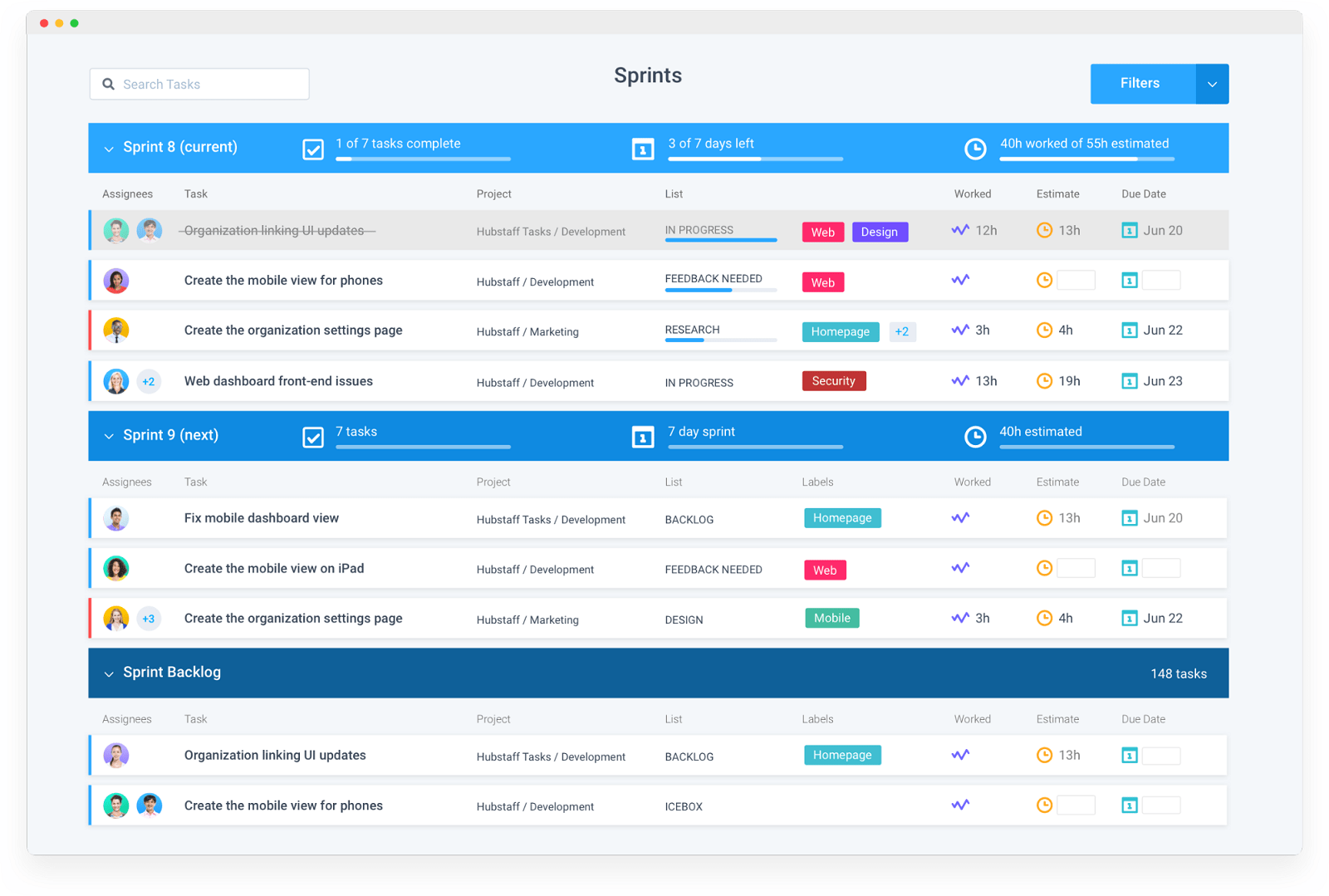E-commerce is a rapidly growing industry that’s shaking up the way we buy online. Unlike traditional retail, e-commerce has low barriers to entry, smaller startup costs, and better margins.
Because of this, more and more people than ever before are starting online businesses. Right now, e-commerce makes up for 14% of all retail sales worldwide, and this figure is growing rapidly every year.
However, unlike traditional retail, e-commerce stores don’t attract customers off the street, they aren’t competing with a small selection of stores in one location, and online retail doesn’t deal with people face-to-face.
To counteract the challenges that arise from these differences, e-commerce stores need solid project plans from the outset to help generate success.
A lack of a clear project plan leads to projects getting over-complicated, vital tasks being missed, sales suffering, profit being lost, and stores closing down.
Thankfully, by carefully planning processes and implementing the right workflows, you can make running your e-commerce store simple and straightforward.
With a range of software and tools, discovering how to plan your e-commerce projects is easier than ever before.
We’ve broken down the three key steps you need to take to properly plan out your e-commerce projects below. Take a look:
Boost your team’s efficiency with Hubstaff's productivity tools
1. Choose a project management strategy
Planning out an e-commerce project starts by choosing a project management strategy that will help guide your project from start to finish.
There are a variety of project management strategies that you may find helpful. These include:
Scrum
Created to make IT projects more simple, this project management strategy is ideal for managing e-commerce projects. Its key features are:
- Daily 15-minute meetings to plan key tasks for the day
- Project Sprints: A one- to four-week-long period focused on one task or goal
- Sprint reviews to analyze and learn from sprint periods
- Backlogs to keep track of projects you’d like to implement down the line
- Burndown charts to help keep track of whether tasks are on schedule or whether things are being slowed down

Kanban
Kanban is similar to Scrum project management but it is less restrictive. Kanban project management has a softer focus that allows you to categorize tasks as ‘To do’, ‘Doing,’ and ‘Done.’
These tasks are usually tracked using a project management app or by moving sticky notes across a whiteboard. Kanban’s key features are:
- Continuous release: Making small changes and updates on a very regular basis to contribute to the progress of the overall task
- A focus on lead times and the strategizing of projects around how long deliverables will take to execute
- A visual understanding of the project and what’s coming next
These are just a couple available project management approaches you can take. Check out our complete guide to project management to see which one is right for your business.
Whichever project management methodology you use, you may find it useful to use a project management tool such as Hubstaff Tasks to help you manage your tasks and keep track of deliverables and deadlines.
Choosing a project management strategy or methodology from the start will help keep your projects organized and defined, so you don’t get bogged down with tasks.
Try the perfect project management tool for your e-commerce team
Organize, assign, and manage tasks for your team, no matter where they work.
2. Plan e-commerce projects
Once you’ve finalized which project management methodology you will use for your e-commerce projects, it’s time to start planning them out.
To run a successful e-commerce store, you’ll have to balance a number of key projects. These might include:
- Competitor analysis
- Website planning
- Payment process organization
- Design and layout of your site and marketing
- Copywriting
- Product photography and optimization
- Email and social media marketing
- Social and search advertising
Balancing all of these projects requires absolute focus and a clear strategy. Utilizing the project management methodologies above will help you keep things organized and moving properly.
That, combined with the right tools, will allow you to automate e-commerce tasks such as email campaigns, customer support, and much more.
We’ll cover some of these tools in the following section.
When working out how to plan your e-commerce projects, start by setting the groundwork. Prepare documentation or project blueprints that outline your goals, audience, vision, and how you’re going to get there.
Understanding what those in your niche or industry are doing can help set your goals, guide your strategy, and help refine your approach.

Bonus: Sample e-commerce project plan
The great thing about e-commerce is that you can see the effects of your efforts relatively quickly through the sales of your products.
Start each project with a clear audit of what’s being done by competitors already and then begin to strategize your desired areas of advantage and success. Doing so will allow you to approach your projects from an informed perspective and prevent you from wasting time on non-essential tasks.
Here’s what a sample project plan might look like at a high level:
- Set goals and objectives: What do you want to accomplish? The more specific the better; A 5% increase in sales this quarter, for example.
- Competitive research: Who is already in this space? What’s working for them and how can you build on that or separate your brand from theirs?
- Determine roles and major projects for a set timeframe: Which skills do you have available and who do you need to hire to accomplish these goals?
- Break projects into tasks: And assign them to different people on your team. If you’re using sprints, make sure each task will take the duration of one sprint so it’ll be easier to focus on one aspect of the project at a time
- Implement and test: A/B testing is a great tool for e-commerce businesses
- Compile learnings: What worked? What didn’t? Where are the gaps that you need to address?
- Refine the process: Cut out what’s not working in your process and find ways to continually streamline so you get better and faster at completing projects.
When sales aren’t increasing despite your investment in marketing or in your online store, something must be off.
That’s why every project plan should include these last two steps: compiling learnings and refining your process.
Subscribe to the Hubstaff blog for more project management tips
3. Monitor and refine your e-commerce projects
As you work through your e-commerce projects in Sprints or using the Kanban system, it’s important to track your progress and performance.
Each style of project management incorporates clear reviews, which are essential to running a successful e-commerce project.
Just as you use a URL shortener or cookies to track the performance of your e-commerce ads and marketing, use time and project management tools to keep track of your internal efforts.
This data can help you improve and refine processes over time — a must for e-commerce companies of all sizes.
Manage time and tasks with ease
To get an even better understanding of how your team and project is performing on a granular level, consider using project management and time tracking tool such as Hubstaff Time.
Hubstaff helps e-commerce brands and project managers manage their staff better by giving them more, and better, data to analyze.
The software tracks the amount of time your members of staff spend on tasks each day and monitors productivity levels by tracking keyboard and mouse usage. This allows you to match productivity data with task completion rates, turnaround times, and individual tasks.

By gaining access to better data about time spent on projects and the impact they have on your bottom line, you can begin to spot key roadblocks in your e-commerce project plan and start to optimize your team’s workflow, processes, and daily habits.
If you manage a remote team, check out the extra power of Hubstaff employee monitoring. You can see the apps and tools your team uses, track productivity metrics like activity levels, and configure screen capture to create proof of work.
Being able to identify how productive your staff members are being and how much time key tasks are taking helps improve efficiency, cut down on project development and execution time, and helps reduce the overall cost of projects.
Start to plan your e-commerce projects
Now that you have a clear idea of how to plan your e-commerce projects, it’s time to get started. Launching a successful e-commerce store takes focus, strategy, and execution, so look to implement these ideas from the start.
With all the available tools, e-commerce project management and project tracking have never been easier.
Make sure to incorporate these into your workflow and processes in order to achieve e-commerce success.
Most popular
The Critical Role of Employee Monitoring and Workplace Security
Why do we need employee monitoring and workplace security? Companies had to adapt fast when the world shifted to remote work...
15 Ways to Use AI in the Workforce
Whether through AI-powered project management, strategic planning, or simply automating simple admin work, we’ve seen a dramatic...
The AI Productivity Panel: Lessons From Leaders on What’s Working (and What’s Not)
When I moderated this AI productivity panel, I expected a solid conversation. What I didn’t expect was the flood of real-world i...
Employee Performance Dashboards: Templates, Tools, and Best Practices
Keeping track of how your team’s really doing can be tricky. Spreadsheets pile up, one-on-ones only tell part of the story, and...






